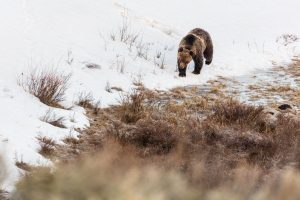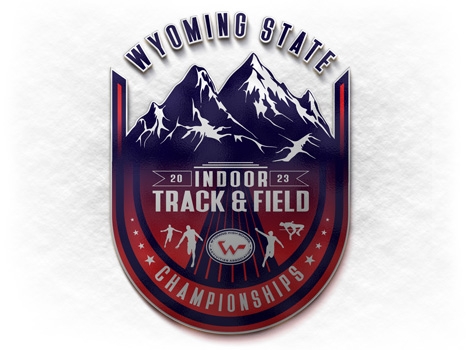First Grizzly of Spring 2023 Spotted in Yellowstone National Park
Written by Andrew-Rossi on March 8, 2023
Wyoming’s “Groundhog Day” is the first grizzly of spring, which has emerged from its hibernation in Yellowstone National Park one year to the day since the first bear of 2022 was spotted.
On Tuesday, March 7, a Yellowstone National Park wildlife biologist on a radio telemetry flight observed the first grizzly bear of 2023 to emerge from hibernation. The adult bear, a male estimated at 300-350 pounds, was seen near the remains of a bison carcass in Pelican Valley, in the central-eastern part of the park.
The first bear sighting of 2022 also occurred on March 7. The first grizzly of 2021 was spotted on March 13, interacting with wolves at a carcass in the northern part of the park. The first bear of 2020 was seen on March 7.
Male grizzlies come out of hibernation in early March. Females with cubs emerge in April and early May.

Courtesy NPS & Jacob Frank
While this might be exciting for many, it’s a dangerous time to see and get close to any grizzly in Yellowstone.
When bears emerge from hibernation, they look for food and often feed on elk and bison that died over the winter. Sometimes, bears will react aggressively to encounters with people when feeding on carcasses.
All of Yellowstone National Park is bear country: from the deepest backcountry to the boardwalks around Old Faithful. Protect yourself (and the bears) by following these guidelines:
- Prepare for a bear encounter.
- Carry bear spray, know how to use it, and make sure it’s accessible.
- Stay alert.
- Hike or ski in groups of three or more, stay on maintained trails and make noise. Avoid hiking at dusk, dawn, or at night.
- Do not run if you encounter a bear.
- Stay 100 yards (91 m) away from black and grizzly bears. Approaching bears within 100 yards is prohibited. Use binoculars, a telescope, or telephoto lens to get a closer look.
- Store food, garbage, barbecue grills, and other attractants in hard-sided vehicles or bear-proof food storage boxes.
- Report bear sightings and encounters to a park ranger immediately.
- Learn more about bear safety.
“Spring visitors skiing, snowshoeing, or hiking in Yellowstone National Park are reminded to carry bear spray and be especially alert for bears near carcasses and areas with early spring green-up. These are the first foods sought out by grizzlies after emerging from hibernations,” said Kerry Gunther, the park’s bear management biologist.
Bear spray has proven effective in deterring bears that are defending cubs and food sources. It can also reduce the number of bears killed by people in self-defense. While firearms are allowed in the park, the discharge of a firearm by visitors is a violation of park regulations.

